
© » KADIST
Marcelo Cidade
Adição por subtração 4 (Addition by Subtraction, 2010) is an intervention into the white cube with both beautiful and intimidating results. The installation is a large rectangular frame created out of shards of clear and colored glass that protrude from the wall. The use of glass fragments is reminiscent of Robert Smithson’s sculpture Map of Glass (Atlantis) (1969), yet the concerns here are very different.

© » KADIST
Enrique Ramirez
Enrique Ramirez’s La Memoria Verde is a work of poetry, politics, and memory created in response to the curatorial statement for the 13th Havana Biennial in 2019, The Construction of the Possible . Other well known works by Ramirez feature the movement and endless symbolism of the sea—like the simultaneous engagement and retreat of the tide—but La Memoria Verde takes the land, plant life, and its human inhabitants as its subject. The film begins with a soft, green, algae-like image that waxes and wanes in focus, then gives way to swaying treetops blowing in a soft wind.
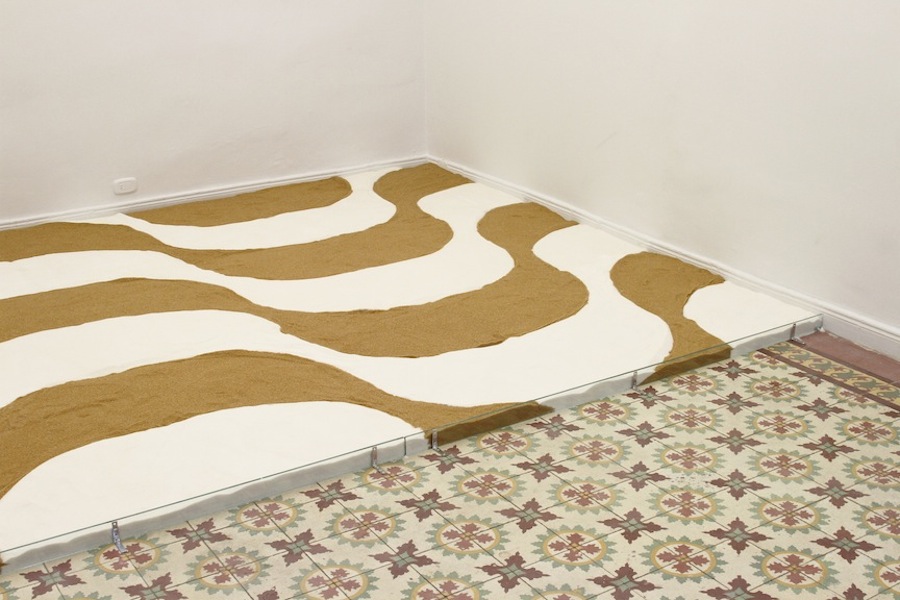
© » KADIST
Felipe Arturo
Defined as entropy, the second law of thermodynamics proposes that energy is more easily dispersed than it is concentrated. One basic illustration of entropy is to imagine white and black sand: once mixed together, it is highly unlikely that the contrasting grains of sand can be separated and restored to their original distinct color groups. Arturo’s Trópico Entrópico ( Entropic Tropics , 2012) considers the colonization of the American continent as a similarly irreversible process of cultural entropy.

© » KADIST
Li Ming
In the eight-channel video installation Movement , Li Ming uses his body as a prop to interact with different means of transportation. Each channel features footage of the artist moving forward, jumping between various modes of transportation that weave in and out of the frame in a carefully orchestrated choreography. As the artist descends from the loader bucket of a moving construction tractor, he jumps onto a skateboard which he then discards as he lays on top of a suitcase that continues rolling forward.
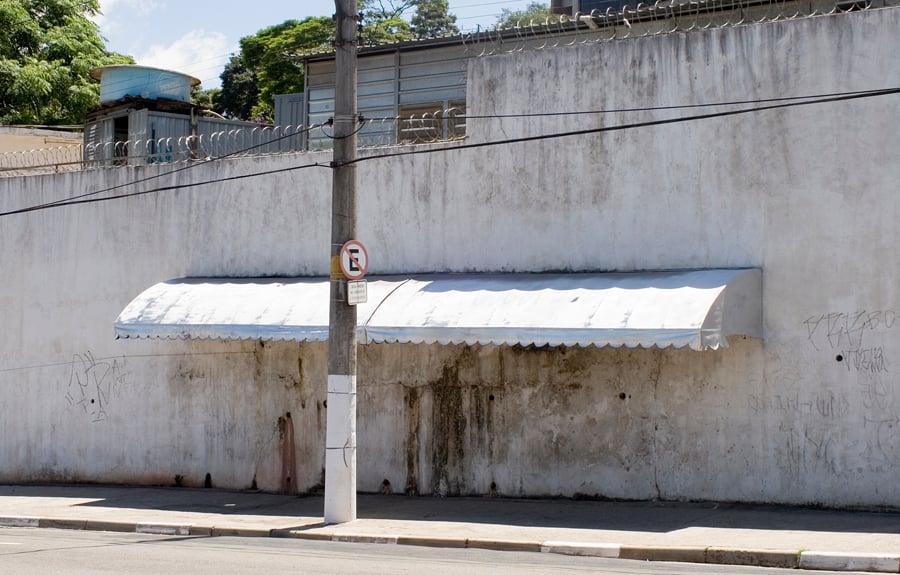
© » KADIST
Marcelo Cidade
This series of photographs reflects Marcelo Cidade’s incessant walks or drifting through the city and his chance encounters with a certain street poetry like the Surrealists or Situationists before him. He captures incongruities or everyday simplicity and highlights their suggestive power. The composition and framing of these interventions specially emphasizes the object of interest and the humor of the context.

© » KADIST
Enrique Ramirez
In Un Hombre que Camina (A Man Walking) (2011-2014), the sense of rhythm and timing is overpowered by the colossal sense of timelessness of this peculiar place. Shot in Uyuni, Bolivia, the film depcits world’s largest salt flat, a site that sits in a mountainous region at over twelve thousand feet above sea level. Ramirez’s work is deeply invested in the loss of regional identity, and the anachronistic dress of his “modern-day shaman” in the film is meant to reconcile the historical and cultural gaps between tribal traditions of a specific time and place and the all-too-prevalent homogeneity brought on by advanced capitalism.
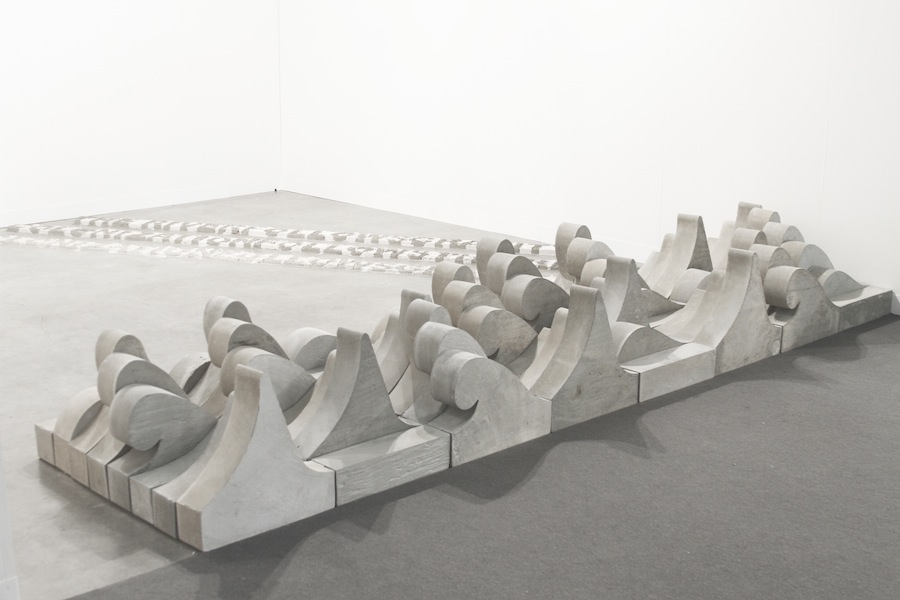
© » KADIST
Felipe Arturo
Primero estaba el mar ( First Was the Sea , 2012) is a system of equivalences between syllables and silhouettes of waveforms cast in cement. Each waveform represents a syllable of the sentence “Primero estaba el mar.” This sentence is the first verse of the Kogui poem of creation. For the Koguis, an indigenous community from the Sierra Nevada de Santa Marta on the Colombian Caribbean coast, water was the absolute presence before the creation of the universe.

© » KADIST
Nazgol Ansarinia
In the early 2000s, as urban redevelopment accelerated and intense construction significantly diminished public space in Tehran, state-funded murals began to represent imaginary landscapes on building facades. The municipality of Tehran uses such pictorial representation to to exert influence over and come to terms with the flow of communal desire. The protrusion of the unreal onto the real interrupts the values, independence, and functionality of one over the other.
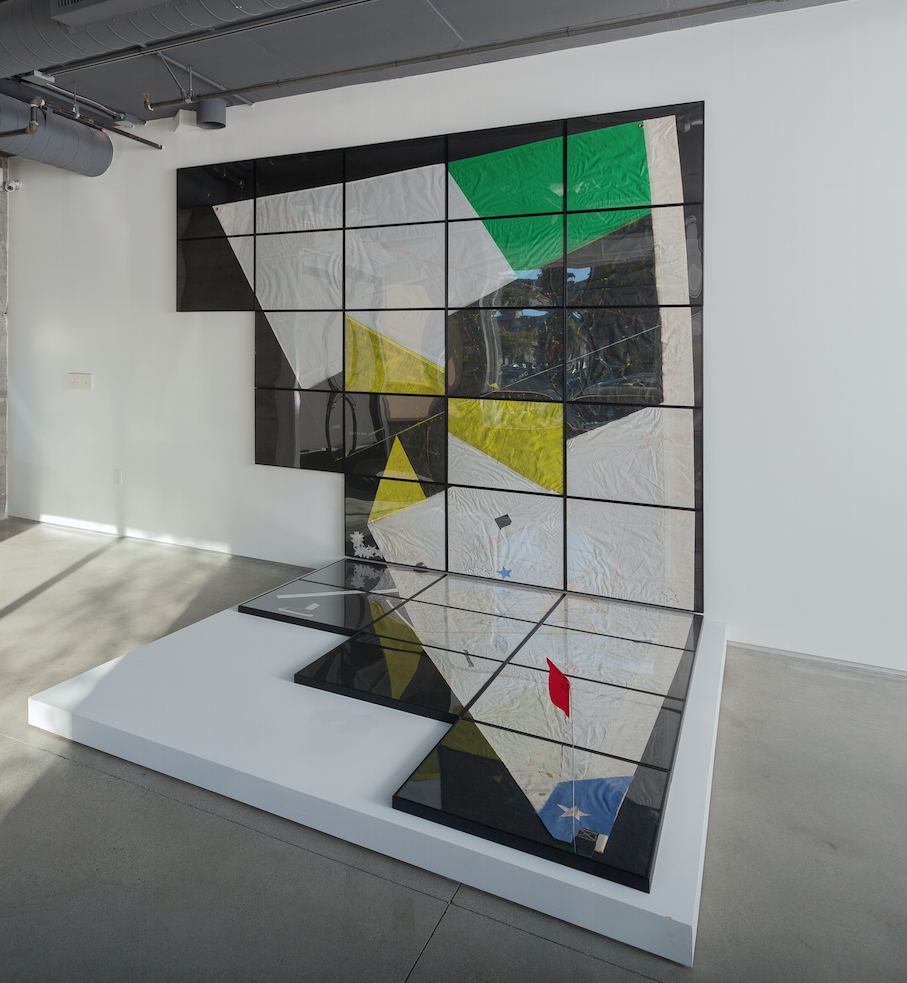
© » KADIST
Enrique Ramirez
Ramirez’s The International Sail is the fifth in a series that features an upside-down worn out, mended and fragmented boat sail. These works epitomize the idea of perpetual movement and migration while carrying a deep personal meaning in the creative process, as the artist’s father himself, still living in Chile, mends and sends the sails to his son, living in Europe. The reversed position of the sail recalls both the shape of South America itself and the Eurocentric view that in the Southern Hemisphere, everything is “upside-down.” The stitches themselves create an illusion of an alternative political geography, and the framed-cuts impose a cartographic grid.
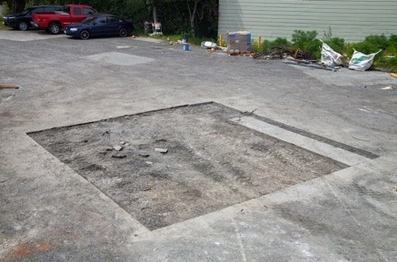
© » KADIST
Marcelo Cidade
450 Hayes Street (excavation site) by Marcelo Cidade is a large scale photograph documenting the artist’s excavation of a parking lot located at 450 Hayes Street in San Francisco, a former section of the city’s Central freeway and current condominium site. The cut shape mirrors the precise shape of the Kadist gallery floor, where the concrete was relocated as part of his residency exhibition entitled Somewhere, Elsewhere, Anywhere, Nowhere. Through this concrete graft, Cidade inextricably links the city with artwork.

© » KADIST
Marcelo Cidade
Marcelo Cidade interrogates the city, architecture and urban planning. This architectonic drawing proposes modular possibilities, adaptable variations based on the form of the concrete block (a material which is often actually integrated in his practice). The “re-definition” announced in the title is in construction, in process, under development, in flux.

© » KADIST
Marcelo Cidade
Marcelo Cidade’s sculpture Abuso de poder (Abuse of Power, 2010) is a mousetrap elegantly crafted in Carrara marble. Originally made for the Carrara Biennale in 2010, it re-creates the iconic form down to the piece of cheese waiting for an unsuspecting victim. In this sculpture, Cicade challenges the viewer’s participation and intervention into the artistic object.
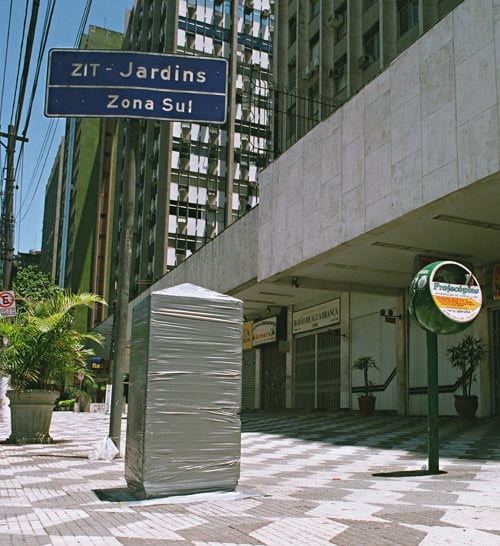
© » KADIST
Marcelo Cidade
This series of photographs reflects Marcelo Cidade’s incessant walks or drifting through the city and his chance encounters with a certain street poetry like the Surrealists or Situationists before him. He captures incongruities or everyday simplicity and highlights their suggestive power. The composition and framing of these interventions specially emphasizes the object of interest and the humor of the context.
Enrique Ramirez
- year born: 1979
- gender: male
- nationality: Chilean
- home town: Santiago, Chile
Nazgol Ansarinia
- location: Tehran, Îran
- year born: 1979
- gender: female
- nationality: Iranian
Felipe Arturo
- year born: 1979
- gender: male
- nationality: Colombian
- home town: Bogota, Colombia
Li Ming
- location: Beijing, China
- year born: 1979
- gender: male
- nationality: Chinese
- home town: Sichuan Province, China
-
2000-2009
Marcelo Cidade
2006This series of photographs reflects Marcelo Cidade’s incessant walks or drifting through the city and his chance encounters with a certain street poetry like the Surrealists or Situationists before him...
Marcelo Cidade
2006This series of photographs reflects Marcelo Cidade’s incessant walks or drifting through the city and his chance encounters with a certain street poetry like the Surrealists or Situationists before him...
-
2010-2019
Marcelo Cidade
2010Adição por subtração 4 (Addition by Subtraction, 2010) is an intervention into the white cube with both beautiful and intimidating results...
Marcelo Cidade
2010Marcelo Cidade’s sculpture Abuso de poder (Abuse of Power, 2010) is a mousetrap elegantly crafted in Carrara marble...
Felipe Arturo
2012Defined as entropy, the second law of thermodynamics proposes that energy is more easily dispersed than it is concentrated...
Felipe Arturo
2012Primero estaba el mar ( First Was the Sea , 2012) is a system of equivalences between syllables and silhouettes of waveforms cast in cement...
Nazgol Ansarinia
2013In the early 2000s, as urban redevelopment accelerated and intense construction significantly diminished public space in Tehran, state-funded murals began to represent imaginary landscapes on building facades...
Marcelo Cidade
2014450 Hayes Street (excavation site) by Marcelo Cidade is a large scale photograph documenting the artist’s excavation of a parking lot located at 450 Hayes Street in San Francisco, a former section of the city’s Central freeway and current condominium site...
Enrique Ramirez
2017Ramirez’s The International Sail is the fifth in a series that features an upside-down worn out, mended and fragmented boat sail...
Enrique Ramirez
2019Enrique Ramirez’s La Memoria Verde is a work of poetry, politics, and memory created in response to the curatorial statement for the 13th Havana Biennial in 2019, The Construction of the Possible ...
